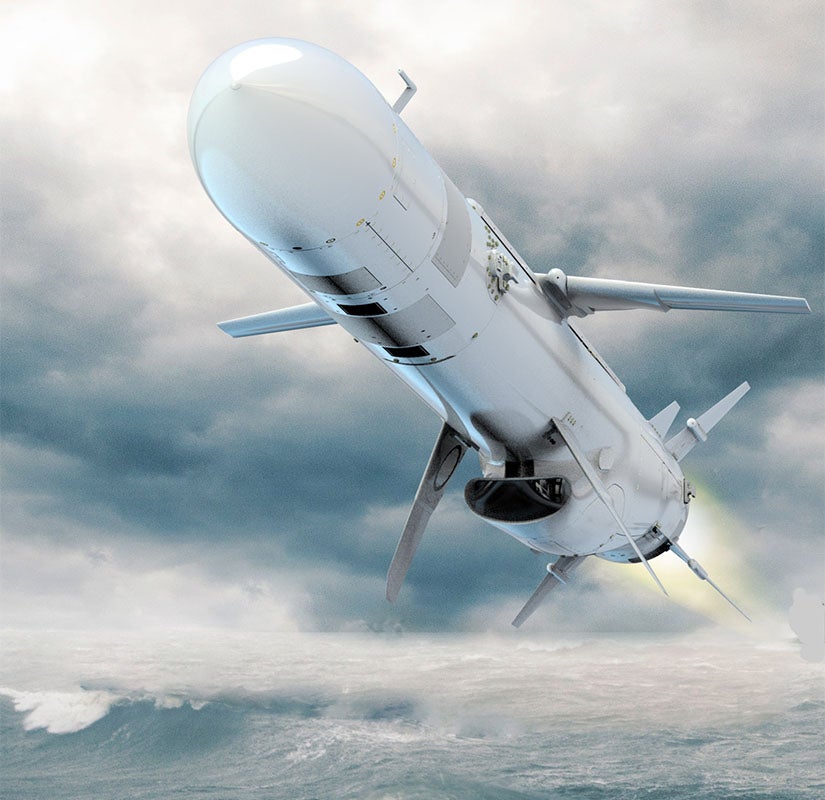
By Matthew Thomas in Security | October 29, 2021
Earlier this month, the Estonian Center for Defense Investment (ECDI) announced the purchase of Blue Spear 5G SSM land-to-sea missile systems from Israel. With a maximum range of 290 kilometers (approximately 180.2 miles), the Blue Spear missile system can reach targets across both the Gulf of Finland and the Baltic Sea, and can also be used to strike both moving and stationary targets at sea in all weather conditions, day or night. Likewise, it can autonomously navigate to its target zone, and zero in on targets on its own once it gets in range to do so. This procurement constitutes a considerable improvement to defense capabilities in the maritime domain for Estonia, and signals a crucial acknowledgement of the need for reorientation to coastal defense.
Like the rest of the Baltic States, Estonia’s coastline has previously been exceedingly vulnerable to Russian aggression. There has been little any of the three could do to stop Russia from projecting power into their port facilities, territorial waters, exclusive economic zones, or other littoral areas, including grey zone hybrid activities and surprise offensive military action. This situation has been exacerbated by a condition of sea blindness, wherein the overarching focus on land-based deterrence has resulted in neglecting the maritime domain. Furthermore, Russia’s anti-access/area denial (A2/AD) capabilities in Kaliningrad and a lack of forward naval presence in the Baltic Sea created a strategic conundrum for NATO and the Baltic States at sea. The Baltic States and NATO have also lacked continuous situational awareness in the Baltic Sea, making aggression all the easier. Against this backdrop, Estonia’s purchase of Blue Spear anti-ship land-to-sea missiles is certainly welcome news.
As Asko Kivinuk of the ECDI notes, Estonia’s focus is now shifting to naval capabilities following the long standing efforts to improve the land forces. The new anti-ship missile systems, which should be arriving by the end of 2023, will greatly improve Estonia’s ability to defend its territorial waters and counter Russian threats at sea. These systems can easily reach targets across the entire length and breadth of the Gulf of Finland, in theory creating an area denial zone there. Likewise, they can reach across the breadth of the Baltic Sea, thereby allowing Estonia to seal off sea routes between St. Petersburg and Kaliningrad, as well as denying access to its own littoral areas. By adding these capabilities, along with the procurement of new naval mines in the summer, Estonia is creating in effect the possibility for an A2/AD area of its own against surface vessels.
The next step, however, is to obtain the means to make such a strategy truly achievable. In order to put the new missiles to good use, Estonia must develop greater surveillance and targeting capabilities at sea. As aerospace and defense correspondent for Forbes, David Axe, notes, for the missiles’ autonomous navigation technology to be practical in any way, the missile must know where its target zone is. In order for that to happen, the personnel programming the missile’s trajectory must know where the target zone is. That requires a complete picture of the maritime domain, which, as CAPT Bill Combes (U.S. Navy, ret.) points out, should be a continual reality, 24/7. This same necessity has been recognized by the commander of the Estonian naval forces, Jüri Saska, noting that such a picture is essential to making both timely and effective decisions. Thus, enhancing surveillance and targeting capabilities at sea should be Estonia’s next project, which may require greater cooperation with Sweden and Finland as well.
For all three Baltic states, and NATO as a whole, this new development is a critical step forward. By developing the means to deny access to surface vessels in the Gulf of Finland and northern Baltic Sea, Estonia can prevent Russia from utilizing Saint Petersburg’s port and naval facilities for aggressive action, leaving only Kaliningrad in play. By doing that, Estonia will cut off one key option for supplying the exclave. Furthermore, it can prevent amphibious landings on its own territory, and prevent a full blockade of all three Baltic States. This will make it all the more difficult for Russia to fully cut off the Baltics and squeeze them into capitulation.
By filling in crucial gaps in coastal defense capabilities, Estonia is leading the way forward for a more complete deterrence posture. Latvia and Lithuania should seek to follow its example. Even if they do not seek to obtain anti-ship missile systems, the other two Baltic states should begin shifting their focus to sea as well, while continuing to maintain what they have achieved with their ground forces. Developing effective capacity to defend against threats in the maritime domain will provide a more complete and balanced deterrence posture and help prevent the contingency of a Russian Anaconda Plan against the Baltics. For the Baltics, naval advancement is long overdue, and apathy about the maritime domain must give way to better strategic thinking. Baltic Security Foundation is invested in being part of this effort, through research and publications both past and future. Hopefully, Estonia’s apparent shift in priorities will inspire greater urgency in the other two to put an end to sea blindness and challenge Russia’s ability to maintain a favorable status quo.
Cover Photo: Blue Spear (5G SSM) missile system. Credit: IAI. Accessed via Naval Technology
